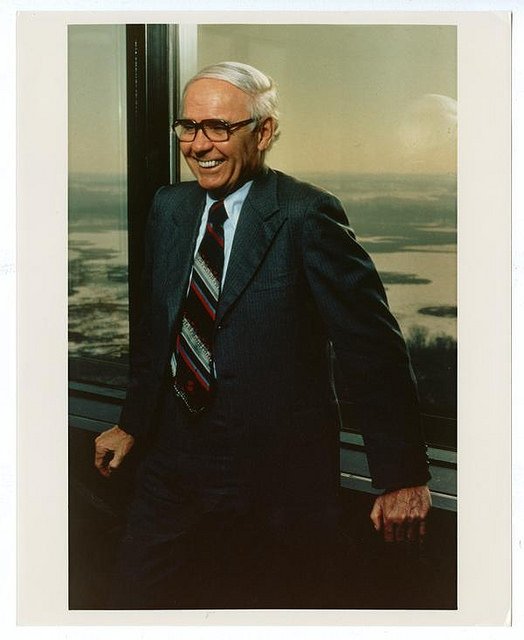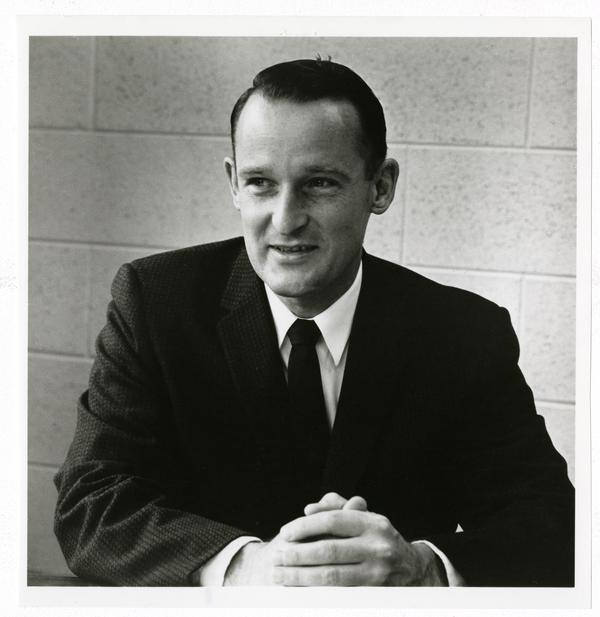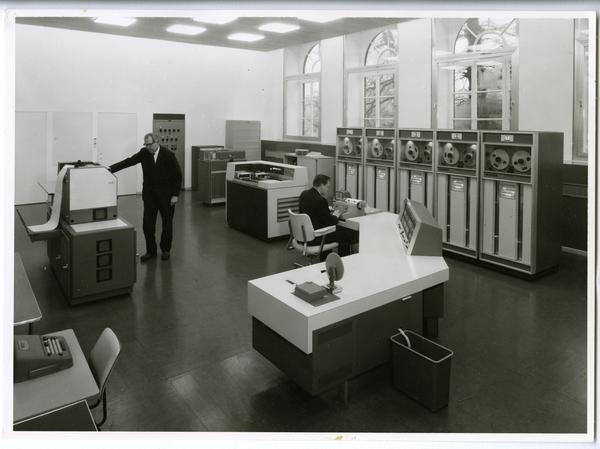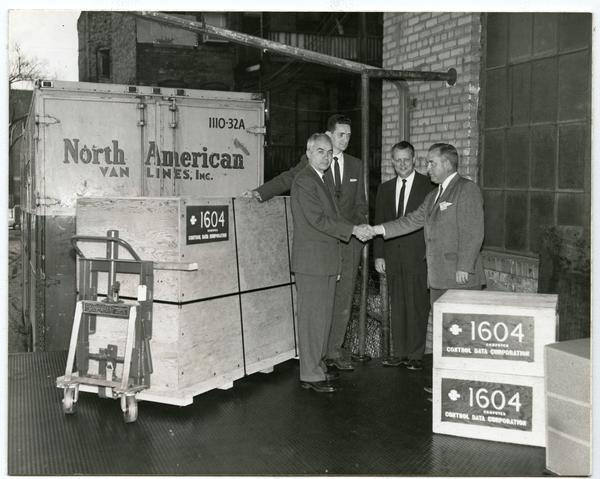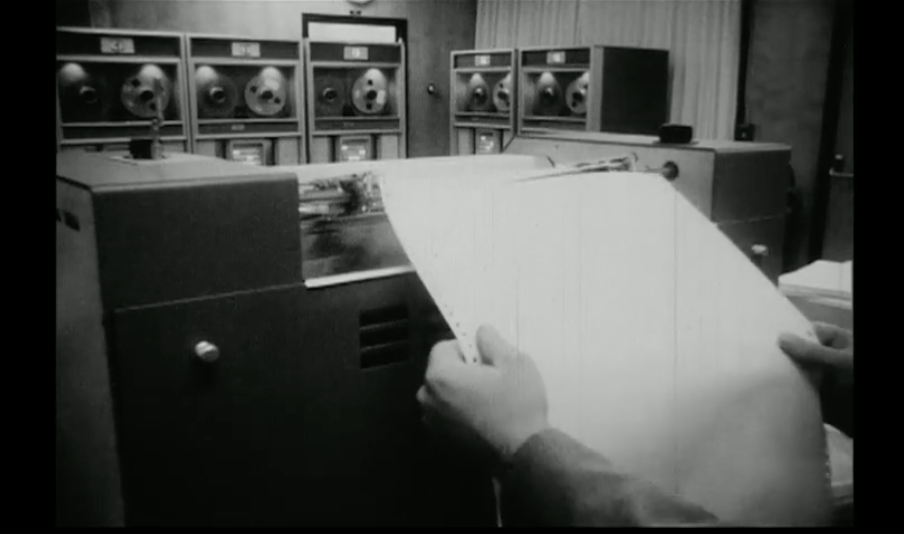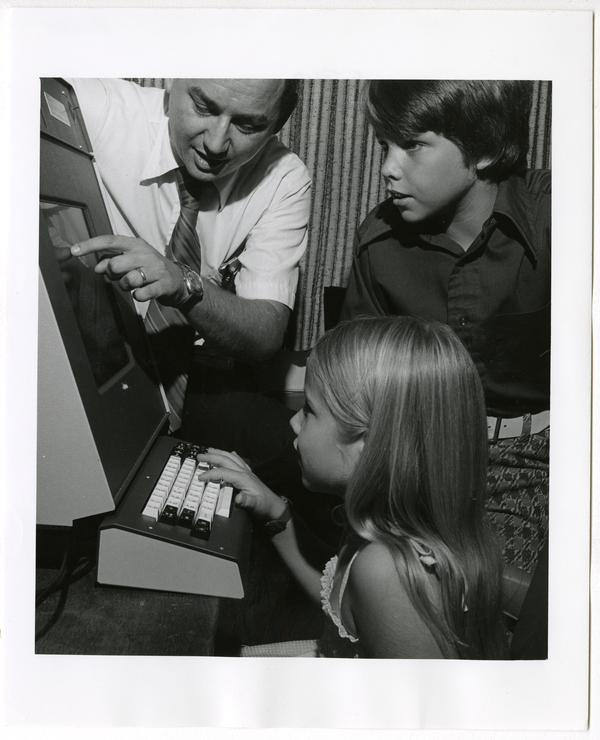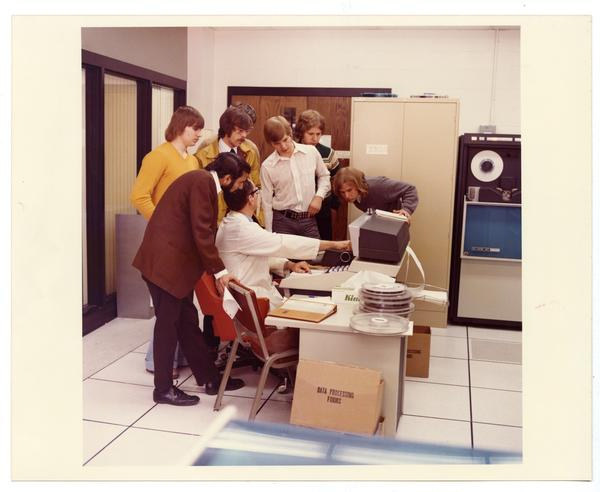In the early 1950s the company Remington Rand, best known for producing typewriters, decided to enter the computer industry. They did so by acquiring Pennsylvania-based Eckert-Mauchly Computer Corporation (EMCC) in 1950 and Minnesota-based Engineering Research Associates (ERA) in 1952. In 1955 Remington Rand merged with Sperry Corporation to form the Sperry Rand Corporation. Their resulting computer division, of which EMCC and ERA were a part, became known as Sperry-Univac. As the parent company, Sperry Rand provided only modest research and development funds for their computer division, and there was intense rivalry between the Pennsylvania and Minnesota computer groups. This left some of the top engineers and managers in the St. Paul, Minnesota division of Sperry-Univac dissatisfied. Several investigated an entrepreneurial venture to leave the firm, and in the early part of 1957 Sperry-Univac engineers Willis Drake, Seymour Cray, William Norris, and (ERA’s former treasurer) Arnold Ryden formulated a plan for this venture. Some of the best and the brightest (themselves and roughly a half dozen others) teamed up with three financiers to form a new Minneapolis-based computer company: Control Data Corporation (CDC). Norris, who had been demoted from his vice-president position at Sperry-Univac, became the president of the new corporation.
Norris, an Electrical Engineering graduate of the University of Nebraska, had worked for Westinghouse prior to becoming a Naval cryptographer during World War II. Along with Howard Engstrom, Norris was one of several founding engineers with a Navy cryptography background at the start of Engineering Research Associates in St. Paul in early 1946. Older than most of his colleagues, he showed leadership skills from the start. Norris rose up within the leadership ranks of both ERA and also Remington Rand, and was an obvious choice among his peers leaving Sperry-Univac to lead the new company. Seymour Cray, an extremely gifted design engineer and graduate in Electrical Engineering at the University Minnesota, also made the decision to join the defecting group from the start. However, Cray officially signed on several months later than others in order to compete his obligation to Sperry-Univac for work on the Naval Tactical Systems Project. This was both a patriotic obligation and also to protect the new firm’s reputation with the U.S. Navy and Department of Defense, as CDC founders anticipated these to be their primary markets both initially and over the longer term.
The year 1957 brought not just the formation of one pioneering and long-time influential computer firm in Control Data Corporation, but also a second in the Boston, Massachusetts area – Digital Equipment Corporation (DEC). Although these two companies both looked to compete outside of the core of the mainframe computer market that IBM dominated, they launched with business and product plans at opposite ends of the spectrum. CDC sought to capitalize on the superior design skills of Seymour Cray to build the fastest, most powerful computers in the world. DEC targeted mid-sized, more affordable computers and pioneered the field of minicomputing. Both, for a time, would have the distinction of being second to only IBM in the computer industry.
Control Data Corporation, through founders’ contributions and stock issuance, raised over a half million dollars to start, but soon ran into financial difficulties. Shortly after forming, the company had acquired aircraft component manufacturer Cedar Engineering. While this gave CDC a workshop and factory space, it also provided them with a very expensive payroll and too few initial government projects. The young firm was placed in a precarious position. Fortunately, CDC was awarded several large contracts from the Department of Defense at the end of the 1950s, though none were more important than a $2.5 million contract to create and deliver the company’s first large mainframe computer, the CDC 1604. Delivered to the military and others in 1960, the CDC 1604 was among the most powerful computers in the world. This created momentum that led to other sizable contracts from both the Department of Defense and the Department of Energy. Ultimately, these projects allowed CDC to follow through on what Norris, Cray, and others had long wanted to do: build computers of unparalleled speed. CDC accomplished this, and essentially created the field of supercomputing, in the early 1960s with the Cray-designed CDC 6600. The 6600 was by far the most powerful computer in the world – the first true supercomputer – when it was delivered to early customers in 1964.
Pictured above is a CDC 1604-A computer, installed in the Hannover Technical Institute in Hannover, West Germany in 1964.
Courtesy of the Charles Babbage Institute Archives
Shipment of the first 1604 computer system in January, 1960 from Minnesota to the U.S. Navy Post Graduate School in Monterey, CA.
Courtesy of the Charles Babbage Institute Archives
This created momentum that led to other sizable contracts from both the Department of Defense and the Department of Energy. Ultimately, these projects allowed CDC to follow through on what Norris, Cray, and others had long wanted to do: build computers of unparalleled speed. CDC accomplished this, and essentially created the field of supercomputing, in the early 1960s with the Cray-designed CDC 6600. The 6600 was by far the most powerful computer in the world – the first true supercomputer – when it was delivered to early customers in 1964.
While mainframes and supercomputers grabbed headlines, the computer division was only one of three of Control Data Corporation’s principal businesses. The company’s other efforts revolved around computer peripherals and computer services. The peripheral business consisted of manufacturing and selling computer disc drives, printers, and various other components and subassemblies. It was a lower profile, but steady and important business that made up roughly 30 percent of the firm’s computing revenues in the 1960s, 1970s, and 1980s.
Although the sound quality from this 1965 video is a bit challenging, it is provides both an interesting overview of how Control Data’s data centers worked along with shots of the facilities at work. As an internal video geared toward employees of the data centers, it also explains how they should behave in the workplace and how they should treat customers.
Courtesy of the Charles Babbage Institute Archives
From virtually the start, Control Data Corporation was also a computer services company. They ran an ever growing number of data centers, or service bureaus, and in the late 1960s and developed a major national (and later international) network called CYBERNET. This consisted of both “Wide Band” computer lines and telephone lines. The data centers and CDC’s time-sharing CYBERNET were greatly expanded when the company acquired programming services and data center pioneer C-E-I-R, Inc. in 1967, and also in 1973, when they purchased IBM’s Services Bureau Corporation (on favorable terms in a partial settlement of a CDC lawsuit against IBM for anti-competitive practices). This allowed for nationwide time-sharing services and – along with the data centers – propelled CDC to into the top five computer services firms of the 1960s and 1970s. To a lesser degree than its competitor IBM, CDC bundled some services helping out customers and especially providing maintenance services for its installations. Additionally, CDC had a thriving programming services business and moved heavily into educational services in the mid-1960s by starting Control Data Institute (CDI). The initial Minneapolis CDI was soon joined by many others across the nation. The original plan for CDI was to provide training for computer technicians, which could work in CDC factories, serve CDC computer customers, and also aid the broader industry with skilled technicians. At student requests, curriculum channels were also developed to train programmers.
The Control Data Institute concept fit with Norris’ larger strategy for pairing business opportunities and company advancement with opportunities to uplift and educate society. He was a true pioneer in the area of Corporate Social Responsibility (CSR). At CDC this took many forms that included CDI, acquiring and investing heavily in PLATO educational computing and software, and locating manufacturing plants in depressed inner city neighborhoods, such as in North Minneapolis. It also included hiring people who had fewer opportunities to work in the computer industry like racial/ethnic minorities, those with less education, and individuals with prison records. While often successful on both social and business fronts, some programs had mixed results and others were difficult to fully assess. Nonetheless, Norris remained deeply committed to CSR and it became a proud signature to CDC along with its path breaking supercomputers and its thriving IT services business.
Norris thought doing good was good business.
While Control Data Corporation thrived in the 1960s and 1970s, the 1980s provided increasing challenges, particularly late in the decade. These challenges were tied, in part, to the rise of personal computing, which was quite disruptive for many mainframe computer firms. Unfortunately, CDC’s peripherals and services businesses were also heavily tied to its mainframe and mid-range computers, and the company failed to transition quickly to the new realities brought on by personal computers. Additionally, although CDC’s investment in a financial arm, via Commercial Credit, had served them well for a number of years, this diversification paired with changing markets led to a liquidity crisis in the late 1980s and early 1990s. The crisis resulted in the dismantling of CDC – the company was reformed as two separate businesses: Ceridian and Control Data System, Inc. At the same time that Control Data Corporation was restructuring, IBM went through a massive reorganization. They ultimately re-oriented to focus primarily on software and services. However, IBM had more resources than CDC and could withstand more losses than CDC, so they made it through the transition intact.
Ultimately, Control Data Corporation’s spinoff, Control Data Systems, did not survive. Ceridian, on the other hand, continued to thrive and as of 2018 has its U.S. headquarters in Bloomington, Minnesota. While CDC no longer exists, and Ceridian’s place in IT services is modest compared to CDC’s role in IT services in the 1970s and early 1980s, the company nonetheless left a major mark on the Twin Cities and Minnesota. With CDC, Minneapolis arguably went from being the Mill City to a high tech city. CDC had an influence on boosting venture capital infrastructure in Minneapolis/St. Paul, and many highly talented information technology workers formerly at CDC found roles at other companies locally, including Lawson Software in St. Paul, Seagate Technologies’ Minnesota operations, and as IT workers at headquarters of various corporate giants, including 3M, Target, Best Buy, and SuperValu, Inc. With the latter three box retailers, top notch IT and logistics is absolutely critical to success and Minnesota IT workers have contributed strongly. If we look at Minnesota’s IT industry only in terms firms headquartered here, it is greatly diminished from earlier decades. However, the Twin Cities have many diverse IT workers and a range of high tech industries, especially medical devices. They have greatly benefited from the legacies of ERA, Control Data Corporation, Honeywell Corporation, and Cray Research.
Visit the Charles Babbage Institute at the University of Minnesota to look at Control Data Corporation’s archival records, where you can learn more about the company’s executive leadership, CDC’s efforts at corporate social responsibility, their legal battles, and much more.
Read an oral history interview, conducted at the Charles Babbage Institute, with engineer Willis Drake to learn about the formation of Control Data Corporation.
Utilize the power of the web to explore digitized photographs, videos, documents, and oral histories related to the history of computing at the University of Minnesota’s UMedia Archives.
Essay by Jeffrey R. Yost, Historian and Director of Charles Babbage Institute
Thomas J. Misa. Digital State: The Story of Minnesota’s Computer Industry (University of Minnesota Press, 2013).
Jeffrey R. Yost. Making IT Work: A History of the Computer Services Industry (MIT Press, 2017).


